Is modernization of the ZU-23 necessary?
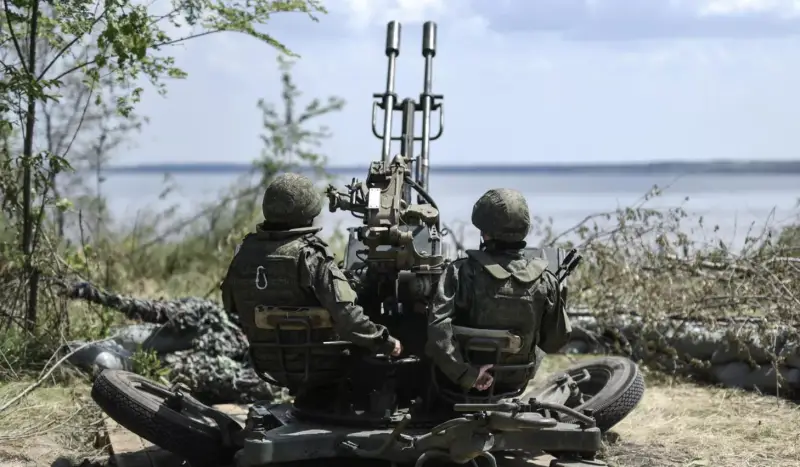
Since the first days of the Northern Military District, ZU-23 anti-aircraft artillery mounts have been actively used in combat operations. Twin 23-mm machine guns fight against air targets, destroying enemy personnel, vehicles and light armored vehicles.
Currently, on Russian resources, including in Military Review, there is a lot of talk about the need to modernize the existing 23-mm spark plugs and create a projectile with programmable remote detonation.
To better understand whether this makes sense, this publication will highlight story the appearance of the ZU-23 towed anti-aircraft gun, its characteristics and examples of application, modernization options, as well as prospects for further use are considered.
Creation of the ZU-23 anti-aircraft gun and its characteristics
Until the early 1960s, the main means of combating low-altitude air targets from the Soviet Army were 12,7-mm DShKM machine guns, 14,5-mm anti-aircraft machine gun mounts: ZPU-1, ZPU-2, ZU-2 and ZPU-4, 37-mm 61-K assault rifles and twin B-47. Standing apart were the 57-mm AZP-57 (S-60) guns, which could also reach medium heights.
Anti-aircraft 12,7–14,5 mm machine guns and 57 mm cannons were fully adequate for their purpose in the first post-war decades. But in connection with the offensive in aviation During the “jet era”, 37-mm clip-loading anti-aircraft guns mounted on bulky and heavy four-wheeled “carts” were already considered insufficiently fast-firing and too heavy.
The troops needed a new rapid-firing, compact and lightweight anti-aircraft gun, with ammunition that could reliably engage low-flying subsonic targets at a distance of more than 2 km.
Design of the new installation began in 1955. Three variants were developed and embodied in metal: ZU-40, ZU-575 and ZU-14. Based on the results of military tests, the military chose the lightest one - ZU-14, created at TsKB-14 under the leadership of R. Ya. Purtsen and E. K. Rachinsky. The anti-aircraft gun entered service in 1960 under the designation GRAU 2A13. In documents it is designated as ZU-23-2, but in the army it is usually called ZU-2 or “zushka”.
The ZU-23 anti-aircraft gun consists of the following main parts: two 23-mm 2A14 assault rifles, a machine tool, a wheeled platform, lifting, rotating and balancing mechanisms and sights.
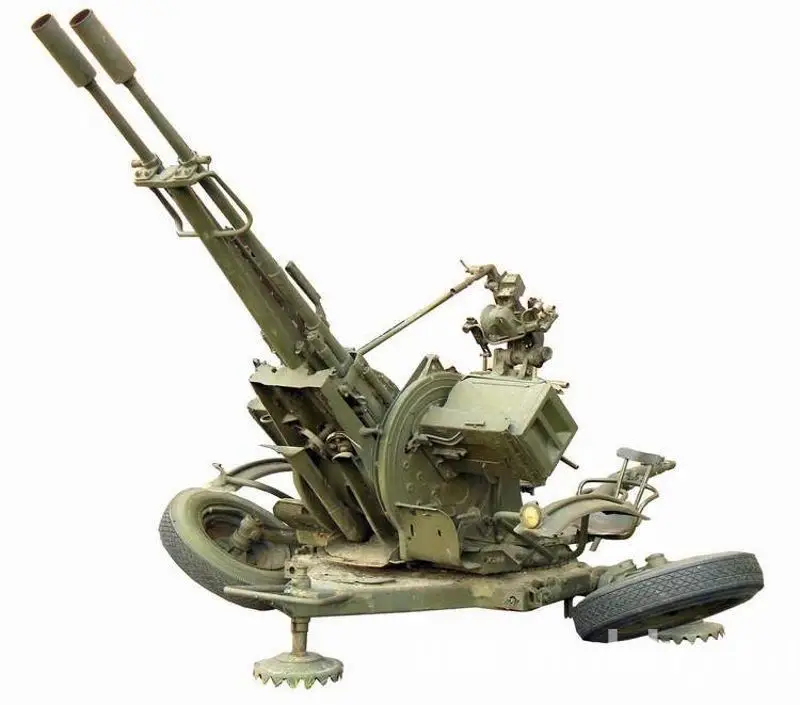
On the base of the upper carriage there are two seats, as well as guidance organs in the vertical and horizontal planes. The installation uses very successful and compact manual drives for vertical and horizontal aiming with a spring-type balancing mechanism, which allow you to transfer the barrels to the opposite side in just 3 seconds. All-round firing is provided in the horizontal plane. Vertical aiming angles: −10°…+90°.
There is no standard anti-aircraft fire control device (FCU), which provides data for firing at air targets (lead, azimuth, etc.), in the anti-aircraft battery. This limits the possibilities of firing at air targets, but makes the installation as cheap as possible and accessible for use by crews with a low educational level.
The ZU-23 is equipped with a ZAP-23 anti-aircraft automatic sight, as well as a T-3 optical sight (with 3,5x magnification and a 4,5° field of view), designed for shooting at ground targets. Sighting devices ensure effective fire against air targets at a distance of up to 2 m, and a height reach of up to 000 m.
The installation has two trigger mechanisms: foot (with a pedal opposite the gunner's seat) and manual (with a lever on the right side of the gunner's seat). Machine gun fire is fired simultaneously from two barrels. On the left side of the trigger pedal there is a brake pedal for the rotating installation unit. Installation weight – 950 kg.
The 23-mm cannon weighs 77 kg, the barrel length is 87 calibers. The automation works by removing part of the powder gases with a wedge locking of the bolt. The design of the machines is the same, only the details of the feed mechanism differ. The right machine has right power supply, the left one has left power supply. Both machines are fixed in one cradle, which, in turn, is located on the top of the machine. The modified 2A14M assault rifle, subject to temperature conditions, has a survivability of more than 5 rounds.
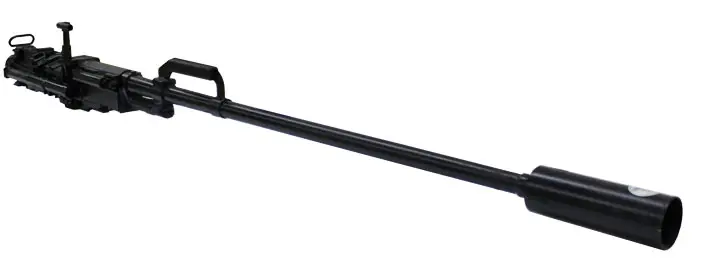
Rate of fire – 1 rounds/min. The total rate of fire from two barrels is twice as much. Practical rate of fire up to 000 rounds/min. Feeding is carried out from a box with a 300-shot tape. The weight of each cartridge box with loaded tape is 50 kg. Changing a box of tapes and loading takes 35,5 seconds.
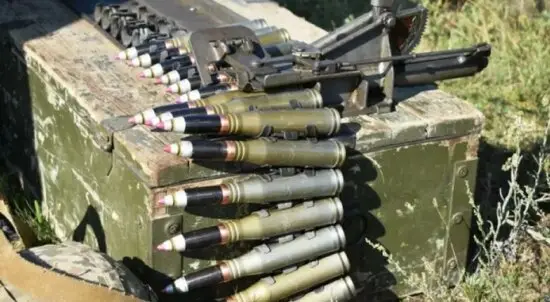
Firing is carried out with a 23x152 mm cartridge, created on the eve of the war and used in the VYa aircraft cannon. The ammunition load includes rounds with two types of projectiles: armor-piercing incendiary tracer (BZT) and high-explosive fragmentation incendiary (HEF). The mass of the projectiles is 188,5–190 g, the initial speed is 980 m/s. A BZT projectile at a distance of 700 m at an impact angle of 60° ensures penetration of armor 15 mm thick. The tracer's burning time corresponds to a range of 2 m, and the projectile explodes 500–9 seconds after the shot. The following scheme for equipping the tape is recommended: 11 OFZ - 4 BZT.
A two-wheeled chassis with springs is mounted on road wheels. In the firing position, the wheels are raised and tilted to the side, and the gun is mounted on the ground on three support plates. A trained crew is able to transfer the ZU-23 from a traveling position to a combat position in just 30 seconds, and back in 40 seconds.
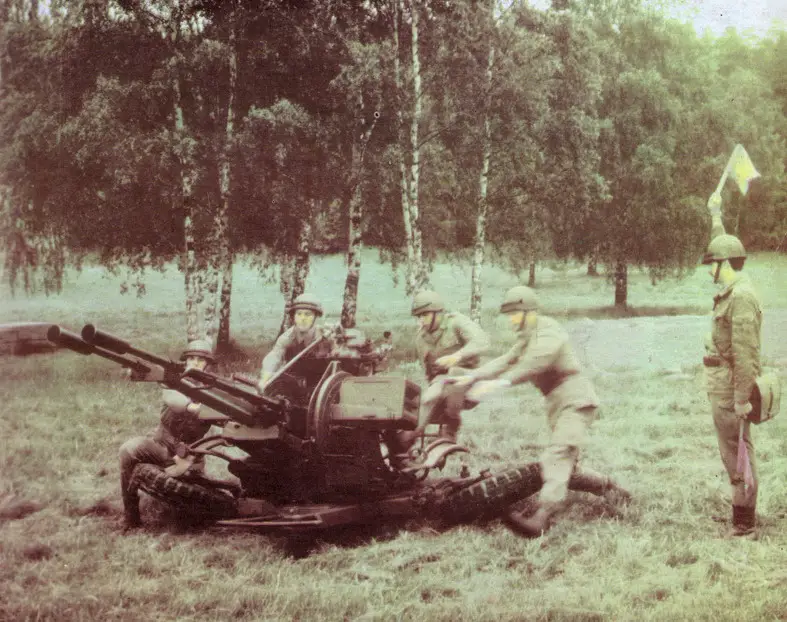
The installation does not require preliminary preparation of the firing position and is fixed at three points on any relatively flat area. When the installation is transferred from the traveling position to the combat position, its wheels turn up and to the sides, and the “tank” itself rests on the ground with the platform jack plates.
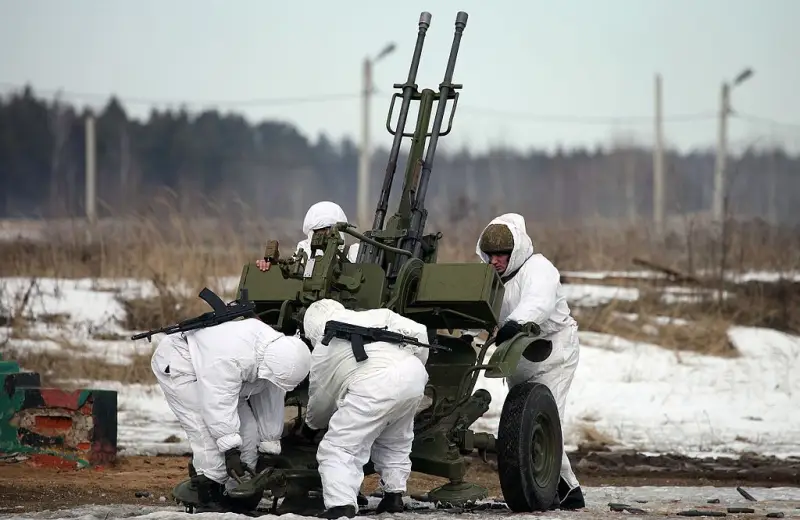
If necessary, it is possible to fire from wheels and even on the move - right when transporting the ZU-23 behind a car, which is extremely important for a short-lived combat encounter.
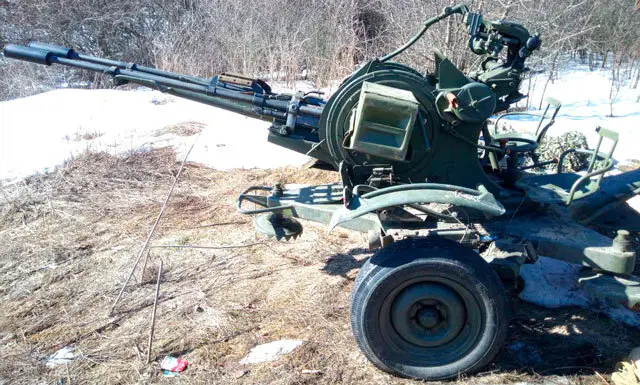
The weight of the twin 23-mm installation in the stowed position, together with covers and loaded cartridge boxes, is about a ton, and it can be towed by any army vehicle. Maximum speed on the highway is up to 70 km/h.
Service and combat use of ZU-23
After being adopted, the ZU-23 began to replace 37-mm anti-aircraft guns in the air defense of the Ground Forces, which began to be taken out for storage and actively transferred to friendly countries. But by that time, a significant part of the anti-aircraft artillery regiments were already armed with the S-60 system, which, including the AZP-57 artillery machine guns and a gun guidance radar, provided a greater firing range and height reach and a higher probability of hitting the target.
Also, 23-mm installations have replaced 14,5-mm quad and coaxial machine gun installations in battalion-level anti-aircraft units. However, until the collapse of the USSR, the 14,5-mm anti-aircraft guns ZPU-2, ZU-2 and ZPU-4 remained in the army and were used mainly to cover radar and air defense systems. In the 1970s, the spread of the ZU-23 was largely restrained by the massive saturation of troops with MANPADS, self-propelled artillery systems ZSU-23-4 "Shilka" and short-range air defense systems "Strela-1".
In the 1980s, lightweight 23-mm towed installations found their niche in the anti-aircraft units of the Airborne Forces, the Marine Corps and Coastal Defense. A certain number of ZU-23s were also available in the Ground Forces and the Air Defense Forces of the USSR.
ZU-23 units were exported to more than 30 countries, licensed production was established in Poland and Bulgaria. The production of ammunition was carried out in Bulgaria, Egypt, India, Iran, Israel, Poland, France, Finland, Switzerland and South Africa.
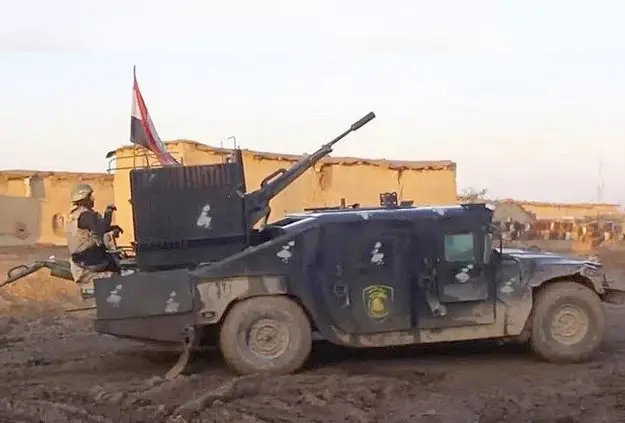
The 23-mm "spark" has a wide history of combat use. She participated in many conflicts, firing at both air and ground targets.
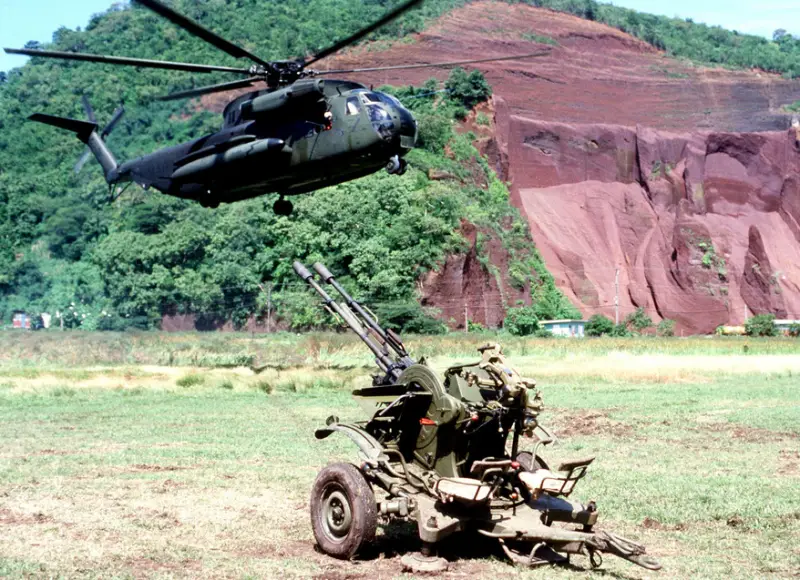
During the Afghan war, the ZU-23 was actively used by the Soviet “limited contingent” as a means of reinforcing fire at checkpoints and providing cover for convoys, mounted on trucks: GAZ-66, ZIL-131, Ural-4320 or KamAZ.
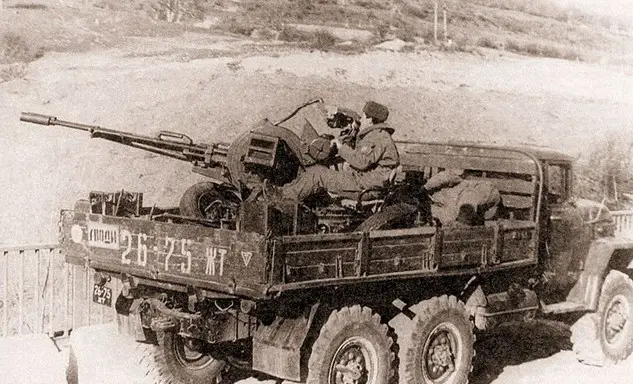
Rapid-firing anti-aircraft guns mounted on trucks had the ability to fire on mountain slopes at high elevation angles and were significantly superior in range and power to light infantry guns. weapon.
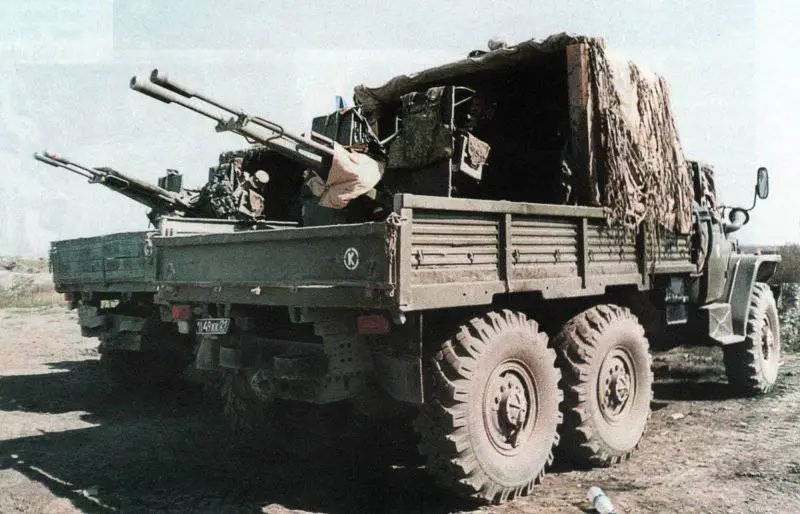
The ZU-23 proved to be an effective means of repelling attacks on convoys in mountainous terrain. In addition to trucks, 23-mm installations were installed on a variety of chassis, both tracked and wheeled.
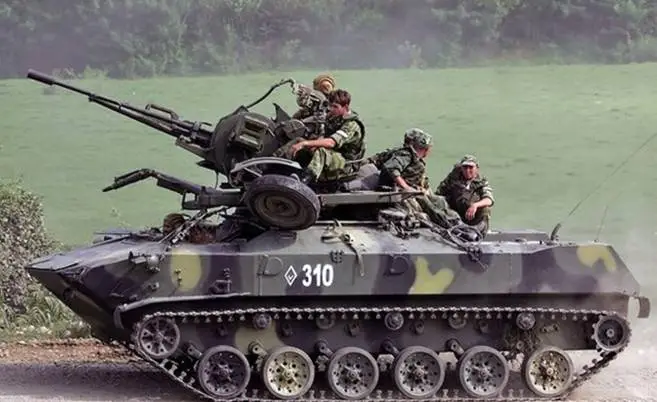
Subsequently, various self-propelled guns with ZU-23 were very actively used during the “counter-terrorist operation” in the North Caucasus and in August 2008 in combat operations in South Ossetia and Georgia.
In a number of units, due to the exhaustion of the service life of the ZSU-23-4 Shilka anti-aircraft self-propelled guns, they were temporarily replaced by 23-mm installations based on the MT-LB, further increasing the number of MANPADS in the anti-aircraft missile and artillery battery.

A significant disadvantage of such self-propelled guns is the high vulnerability of openly located crews. In this regard, homemade armored shields were sometimes mounted on anti-aircraft installations.
The successful experience of combat use in the Airborne Forces of the BTR-D armored personnel carrier with the ZU-23 installed on it became the reason for the creation of a factory version of the anti-aircraft self-propelled gun, which received the designation BMD-ZD “Skrezhet”.
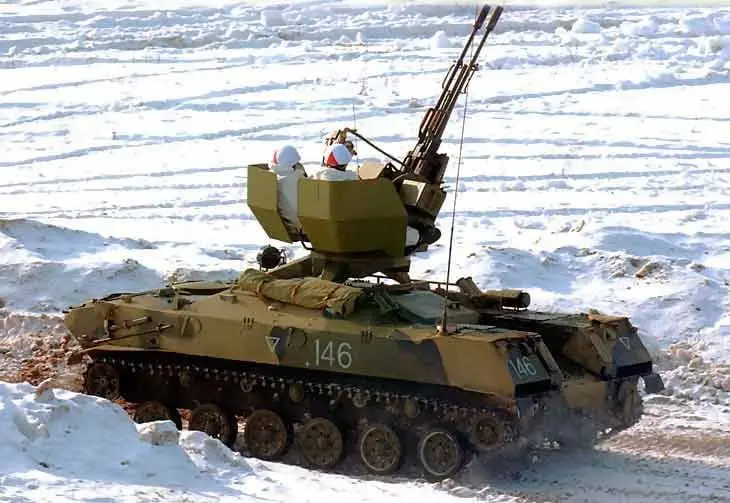
On this anti-aircraft self-propelled gun, the two-man crew is protected by light anti-fragmentation armor. To increase the effectiveness of air attack fire, the sighting equipment included optoelectronic equipment with a laser rangefinder and a television channel, a digital ballistic computer, an automatic target tracking machine, a new collimator sight, and electromechanical guidance drives.
This allows you to increase the probability of destruction and ensure 24-hour and all-weather use against low-flying targets. An option for upgrading sighting equipment, which did not take root on towed installations, turned out to be in demand in airborne self-propelled guns, which can be dropped on a parachute platform. However, only a few of these ZSUs were released.
As of 2020, the Russian armed forces operated about 300 ZU-23s, mostly installed on various equipment. Even up to a thousand 23-mm towed anti-aircraft guns were available at storage bases.
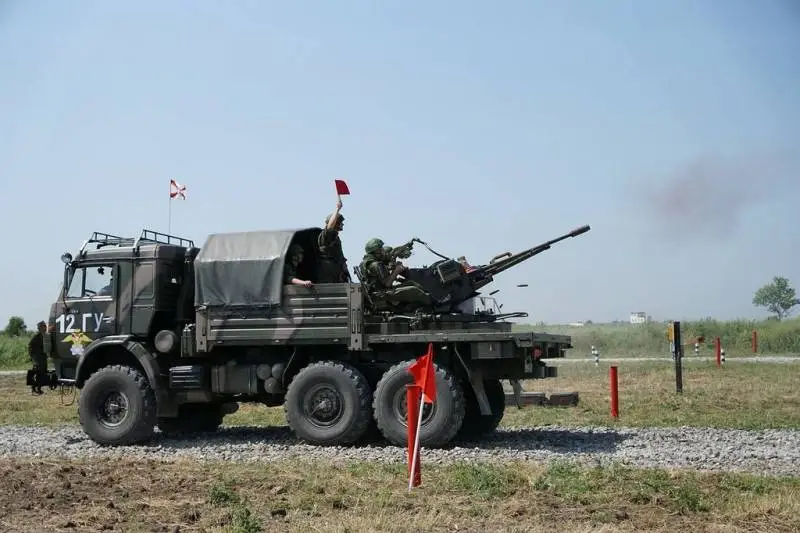
Several years ago I had the opportunity to observe 23-mm mounts mounted on KamAZ-4310 trucks that accompanied the convoy of the 12th Main Directorate of the Russian Defense Ministry. Towed ZU-23s were also seen in September 2021 during military exercises on Kunashir Island.
Disadvantages of ZU-23
At the time of adoption, the ZU-23 installations were considered as an inexpensive and flexible “last line” air defense system, which was an addition to other, more effective anti-aircraft systems. Already in the 1970s, it became clear that the “zushka” (like all anti-aircraft artillery without radar guidance) was rapidly losing its significance, since it was not capable of effectively protecting troops and important stationary objects from air strikes, which was associated with several innate disadvantages of the ZU-23.
In its basic configuration, the installation, which has a fairly high rate of fire, does not provide acceptable effectiveness against air targets. Thus, the probability of hitting an aircraft flying at a speed of 300 m/s when passing through the entire firing zone is only 0,02.
A competent reader can rightly conclude that this is a very high speed for an aircraft operating at low altitude. Which, of course, is fair, but it is worth remembering that since the 1960s, one of the most effective methods of overcoming air defense lines has been low-altitude throws at speeds close to sound. As the flight speed decreases and the time spent in the firing zone increases, the probability of a hit increases, but still remains unacceptably low.
This is primarily due to the fact that the ZU-23 has a relatively simple sight, and the crew does not have the ability to accurately determine the target parameters. The installation is guided by a ZAP-23 anti-aircraft sight. You can enter the current range of up to 3 m and speed of up to 000 m/s into the sight, which theoretically allows you to solve the problem of calculating the lead (the point at which the projectile hits the target) when firing at an airborne enemy at a distance of up to 300 m.
The range to the target is determined by eye or using a stereo rangefinder. The remaining data is determined visually. Target elevation angles and azimuths are entered directly by sighting. It is clear that with such a determination of shooting parameters, the accumulated error will be too large, and this will inevitably negatively affect accuracy.
One of the most promising and obvious areas of modernization of the ZU-23 is the use of instruments that make it possible to accurately determine the range, speed and directional parameters of a target, as well as the introduction of sights that make it possible to effectively detect and fire at aircraft in any lighting conditions.
Also acute is the issue of the effectiveness of existing 23-mm ammunition and their compliance with modern requirements. It is worth recognizing that the choice of a 23-mm cartridge for the VYa air cannon, made more than 60 years ago, was not optimal.
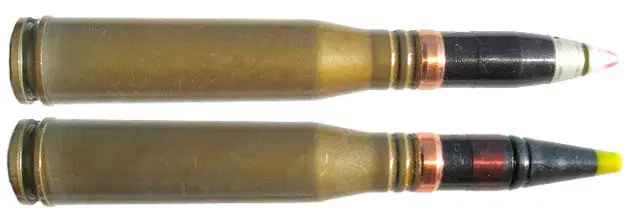
Cartridges 23x152 mm for ZU-23: OFZ and BZT
The 23x152 mm cartridge made it possible to make a relatively simple, light and compact installation, with a mass close to 14,5 mm sparks (the weight of a combat-ready ZPU-2 reaches 1 kg), but it imposed serious restrictions on the firing range and destructive effect of the projectile.
Until the end of the 1980s, the USSR mass-produced an anti-aircraft cartridge, originally adopted for the 25-mm automatic anti-aircraft gun of the 1940 model (72-K). In the post-war period, naval assault rifles with belt feeding 2M-3 and 2M-3M were created for it, which in terms of effective range exceeded the ZU-23 by about 30% and have not been removed from service to this day. An armor-piercing tracer 25-mm projectile weighing 0,288 g has an initial speed of 900 m/s and at a distance of 1 m at an impact angle of 000°, it penetrates 60 mm of armor.
This is exactly the path they took in China. In the mid-1980s, the PLA entered service with the 23-mm Type 85 anti-aircraft gun, which was an unlicensed copy of the ZU-23. But after experimental military operation of Type 85 installations, the Chinese military demanded the use of more powerful 25x184 mm ammunition from the Oerlikon KVV automatic cannon, which made it possible to increase the firing range and the power of action on the target. An armor-piercing incendiary 25-mm projectile weighing 230 g contains 20 g of explosive-incendiary composition and, leaving the barrel at a speed of 1 m/s at a normal distance of 160 m, is capable of penetrating 1-mm armor.
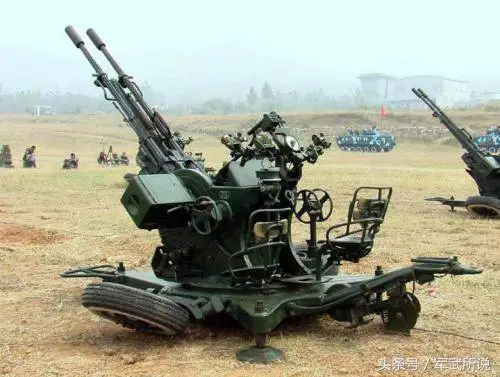
25-mm anti-aircraft artillery mount Type 87
At the end of the 1980s, the Chinese army adopted the 25-mm Type 87 installation, created on the basis of the 23-mm Type 85 and differing from it in the caliber of the barrels, a more massive machine and recoil devices. The weight of the installation was 1 kg.
Due to the increase in the size and weight of the shot, the capacity of box magazines with tape was reduced from 50 to 40 rounds. The total rate of fire decreased to 1 rounds/min. Thanks to an increase in the range against air targets to 600 m and an increase in the power of the projectile, the effectiveness of the Type 3 compared to the ZU-200 as a whole increased significantly.
Even within the Warsaw Pact, some countries chose to use their own longer-range 30mm twin towed and self-propelled anti-aircraft guns. Czechoslovakia and Romania followed this path.
After the appearance in NATO countries of combat helicopters and aircraft armed with guided missiles with a maximum firing range, significantly higher than the effective fire range of the towed ZU-23 and self-propelled ZSU-23-4 "Shilka", the USSR came to the conclusion that it was necessary to create a 30-mm air defense missile system "Tunguska", which entered service in the early 1980s.
In the late 1980s, the A.E. Nudelman Precision Engineering Design Bureau began designing the Sosna anti-aircraft gun system with a 2A38M double-barreled anti-aircraft gun with a rate of fire of up to 2 rounds/min. The ammunition load was 400 rounds. Firing range – 300 m, height reach – 4 m.
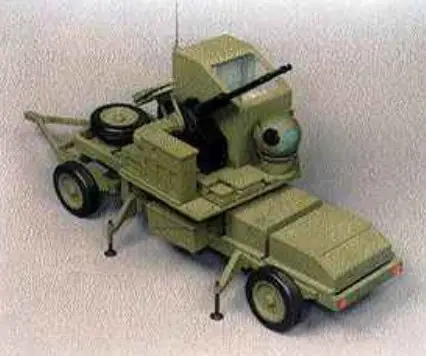
According to the original design, the artillery unit was to be placed on a towed four-wheeled cart. The curb weight of the ZAK was supposed to be 6 kg.
The design of the firing module provided for the possibility of aiming weapons at the target in azimuth in a circle, and in elevation: from –5° to +85°, and protecting the operator from bullets and shrapnel. Target detection and installation guidance were supposed to be carried out using an automatic optoelectronic module combined with a laser range finder and a computer complex, with the possibility of external target designation. Power supply was provided by an autonomous generator with an internal combustion engine or via cable from an external source.
As an option, the towed anti-aircraft gun could be retrofitted with Igla MANPADS or advanced laser-beam-guided missiles. Sketches and models of the towed Sosna ZAK were repeatedly demonstrated at international arms exhibitions, but there was never a customer ready to take on the financing to implement the installation in metal.
Modernization options and future prospects for ZU-23
Before we begin the story about the future prospects of the ZU-23, we will consider foreign options for modernizing the Zushka. Perhaps Poland has advanced the furthest in this direction.
Polish 23-mm anti-aircraft guns have been repeatedly upgraded, there are several variants in service, differing mainly in sights and the presence or absence of missile launchers.
In 2002, production began of the ZUR-23-2KG Jodek-G artillery and missile towed installations, equipped with a combined (day/night) passive optoelectronic sight Prexer CKE-2 and two transport and launch containers for Grom close-range missiles (Polish version of the Igla MANPADS ).
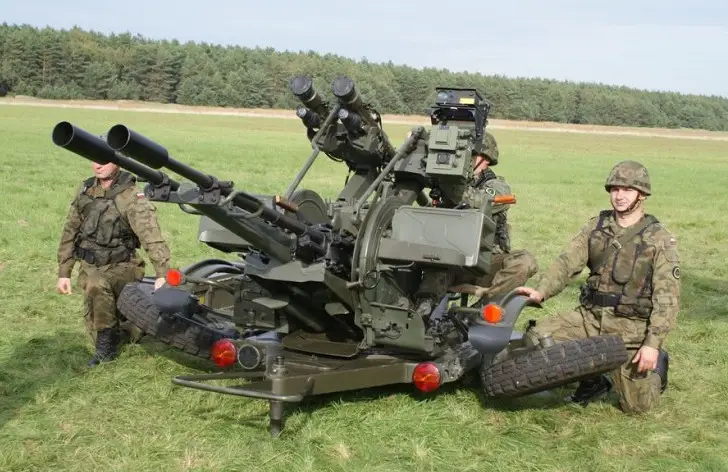
Thanks to the introduction of anti-aircraft missiles into the installation, the firing range at air targets exceeded 5 m and it became possible to destroy air targets flying at speeds of up to 000 m/s. According to Polish experts, the efficiency of the ZUR-500-23KG Jodek-G compared to the original ZU-2 has increased by more than 23 times. The sighting system also ensures operation at night.
In 2007, an installation with an improved all-day sight combined with a laser rangefinder was tested, and sub-caliber armor-piercing incendiary and armor-piercing incendiary tracer shells with an increased muzzle velocity appeared in the ammunition load, due to which the effective firing range increased by about 20%. In 2015, the search and aiming thermal imager CKE-1T was introduced into the installation.
The Pilica artillery and missile system (PSR-A) is designed to protect air bases. The actions of the anti-aircraft battery are controlled by a mobile command post with a computerized control system. Target designation comes from a mobile three-coordinate radar station IAI ELM-2106NG. Six ZUR-23-2SP Jodek combined artillery-missile launchers with Piorun (Grom-M) missiles are equipped with electromechanical drives with the possibility of automated remote guidance without the participation of crews.
The artillery and missile launchers are equipped with a combined GOS-1 surveillance and sighting system with a television camera, a thermal imager, and a laser range finder and can be used individually.
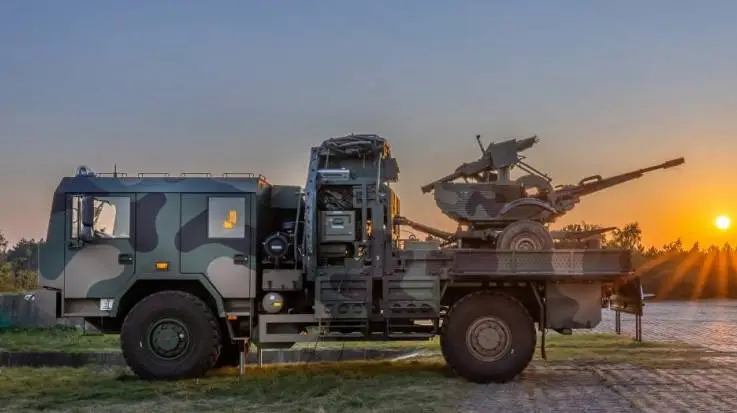
Jelcz 442.32 trucks with a fast loading and unloading device are used for the transportation of anti-aircraft installations and calculation. If necessary, fire can be fired from the body.
At the end of the 1990s, the Finns radically modernized part of their ZU-23, which in the country of Suomi were designated 23 Itk 61. According to the Military Balance, out of 400 23 Itk 61, 23 units were brought to the level of 95 ItK 50.
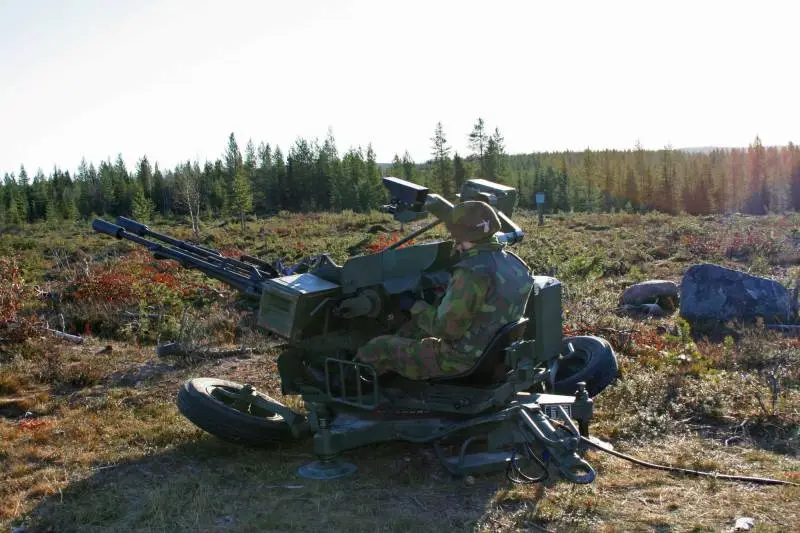
The upgraded 23 ItK 95 received a ballistic processor, a thermal imager and a laser rangefinder. This allowed the efficiency to more than double.
In the 23st century, modernized versions of the ZU-23 appeared in the post-Soviet space. For example, in Belarus, the design bureau of the Podolsk Electromechanical Plant created the ZU-30/1M3-23 and ZU-30/1M4-XNUMX.
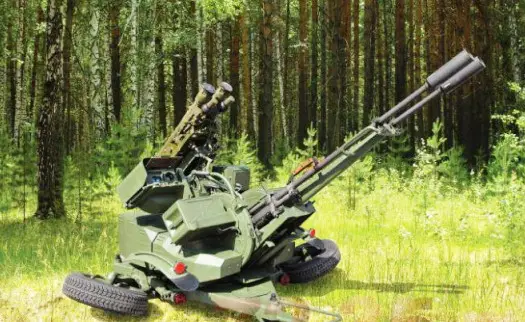
Both modifications are equipped with electric drives that facilitate target guidance and tracking, 23-hour optoelectronic systems, as well as compact gasoline generators. The ZU-30/1M3-XNUMX installation is additionally armed with two Igla missiles.
Our production of the ZU-23 was discontinued in the mid-1980s. However, in Russia, spare parts and barrels are still produced for existing installations. Several modernized variants have also been created in the recent past, the most famous being the ZU-23M1.
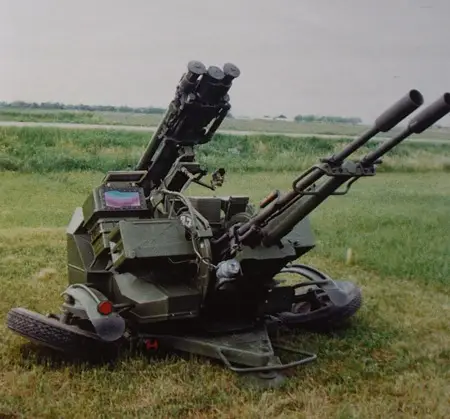
This installation is additionally armed with Igla missiles. Thanks to the introduction of a thermal imaging system for searching and tracking a target, as well as a laser rangefinder, it is possible to operate effectively in conditions of poor visibility and at night. External automated target designation is possible. The introduction of electromechanical guidance drives and a digital ballistic computer makes it possible to significantly increase the efficiency of cannon firing.
Another modernization option is the recently introduced and already widely advertised ZU-23AE installation.
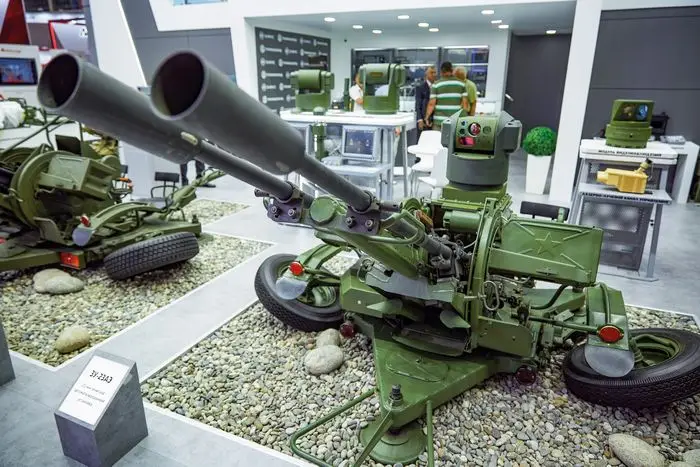
It is stated that the basis for increasing the combat effectiveness of the ZU-23AE is to equip the old Zushkas with modern means of detecting and tracking targets, remote control and supposedly even ammunition with programmable detonation.
The upgraded ZU-23AE received electric drives, which allows for remote centralized control (guidance in manual mode is also retained). An anti-aircraft battery, united by a single control system, can have three installations, one of which is the master, and the other two are slaves.
According to the developers, the installations can be located at a distance of 100 meters from each other. The main highlight is the ability to concentrate accurate fire from several installations on one target, which should greatly increase the probability of defeat. But, apparently, things have not yet come to the practical use of the ZU-23AE.
Historically, the Russian Army, unlike the armed forces of most other states, was very well stocked with self-propelled anti-aircraft artillery, missile and artillery systems, MANPADS, as well as mobile short-, medium- and long-range air defense systems. Given the presence of a large number of relatively modern and fairly effective air defense systems, ZU-23 installations were mainly considered as a cheap universal auxiliary weapon, which, in addition to fighting an air enemy, could provide fire support to ground units. For commanders of various levels, the main advantage of the “zushka” was its simplicity, high maintainability and the ability to quickly prepare calculations.
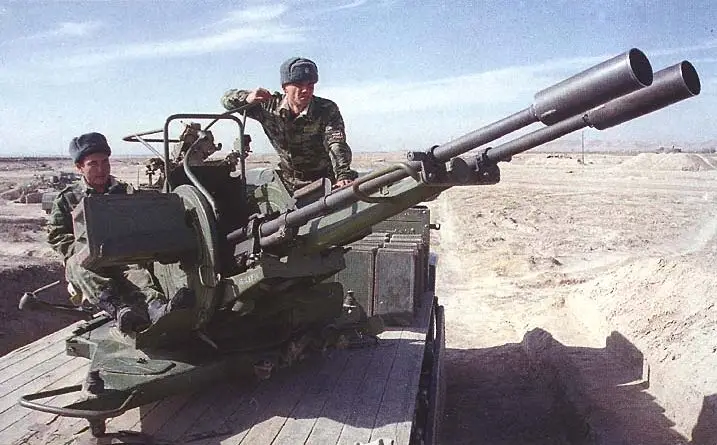
After the end of the Vietnam War, our anti-aircraft gunners no longer had the opportunity to fire at real air targets. Taking into account the fact that simple as crowbar artillery mounts were used in “anti-terrorist operations” exclusively for firing at ground enemies, the leadership of the RF Ministry of Defense did not equip them with expensive optoelectronic sights, laser rangefinders, centralized fire control systems, electromechanical drives, gasoline power generators and short-range missiles. in a hurry.
As a result, single copies of the modernized ZU-23 “shone” at various exhibitions and PR campaigns, but in reality there were none in the troops. When suddenly, during the Northern Military District, it completely unexpectedly became clear that the enemy also has combat aviation and that various Drones, conversations began about the need to urgently increase the combat effectiveness of the available Zushkas.
But no matter how unpleasant it may sound, there is no particular point in investing serious funds and effort in the radical modernization of fairly outdated and long-out-of-production anti-aircraft guns. In a good way, this should have been started 20 years ago.
Most of the operational 23-mm twin tanks are now fighting on the front line or protecting various objects from air strikes, and for modernization they will have to be taken to the rear. To be fair, it should be admitted that even in its original form, being in normal technical condition, with barrels not shot to the point of a shotgun, with a well-prepared crew and a competent commander, the ZU-23 can be quite effective against UAVs.
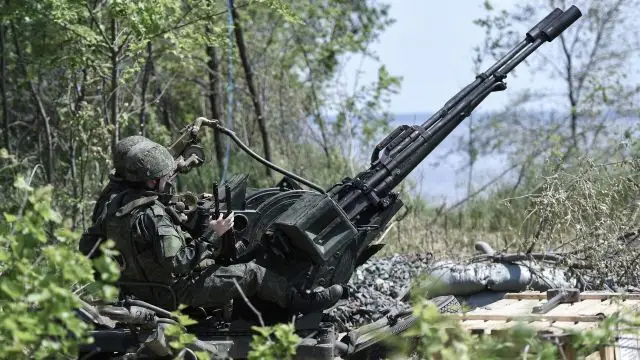
Combat experience shows that during daylight hours and in conditions of good visibility, an aircraft-type drone with a length of about 2 m and a wingspan of up to 3 m, flying at a speed of about 100–120 km/h, at a distance and altitude corresponding to half of the maximum range firing, after shooting in short bursts with tracers, it is destroyed with a probability of 0,15–0,2. In the case when several anti-aircraft guns concentrate fire on one enemy UAV, it is almost always shot down.
As for air-blasted shells, so beloved by many visitors to Voennoye Obozreniye, this is absolutely futile for the ZU-23. As mentioned above, to introduce programmable fuses, it will be necessary to temporarily remove existing anti-aircraft installations from the active army and equip them with modern sights, laser or radar rangefinders, fire control systems and projectile programmers. Naturally, it will still be necessary to organize mass production of new 23-mm ammunition and train crews. In the current situation, it is almost impossible to do this.
As for ammunition, no one in the world makes remotely detonated programmable artillery rounds in a caliber smaller than 30 mm. The most common calibers of automatic guns capable of firing such projectiles are: 35 mm, 40 mm and 57 mm.
When 30-mm and 35-mm shells are detonated, the target is hit not by hull fragments, as is commonly believed, but by ready-made destructive elements thrown forward. During full-scale experiments, it was established that during explosive fragmentation of the hull, a cloud of light fragments with a relatively low expansion speed does not ensure the required damage to the target and an acceptable probability of defeat.
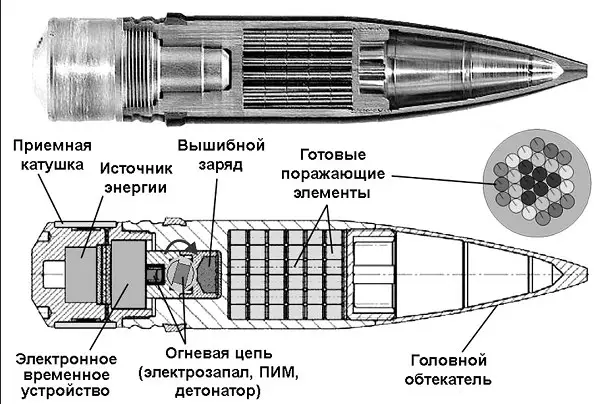
Components of the 30-mm German PMC308 projectile for the MK30-2/ABM gun
The 30-mm PMC308 projectile, developed by Rheinmetall, contains 162 striking elements, which are stacked in 6 rows of 27 elements in each row. Projectile length - 173 mm, projectile weight - 360 g, weight of finished submunitions - 201 g.
It follows from this that the weight of the finished destructive elements in the 30-mm PMC308 projectile is greater than the weight of the entire 23-mm high-explosive incendiary projectile (190 g). The 23-mm OFZ for the ZU-23 has a very modest internal volume and is loaded with 18,5 g of explosives.
The Russian military-industrial complex is capable of producing unique “unparalleled” products, but taking into account the state of the domestic industry producing electronic components, there is great doubt about its ability to create reliable fuses in significant volumes, which will be smaller in size than a similar Rheinmetall product.
From the above it follows that it is hardly realistic to make a mass-produced 23-mm projectile with remote air detonation that satisfies the “cost-effectiveness” criterion in the near future, and the most optimal is a “small modernization” of the ZU-23 part with equipping them with XNUMX-hour sighting and search systems systems and modern rangefinders.
Information